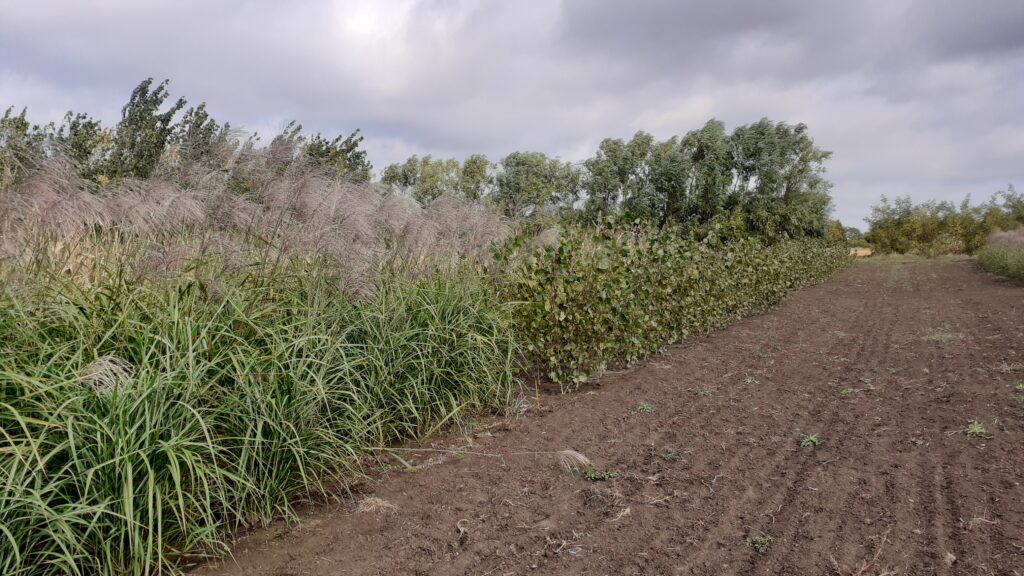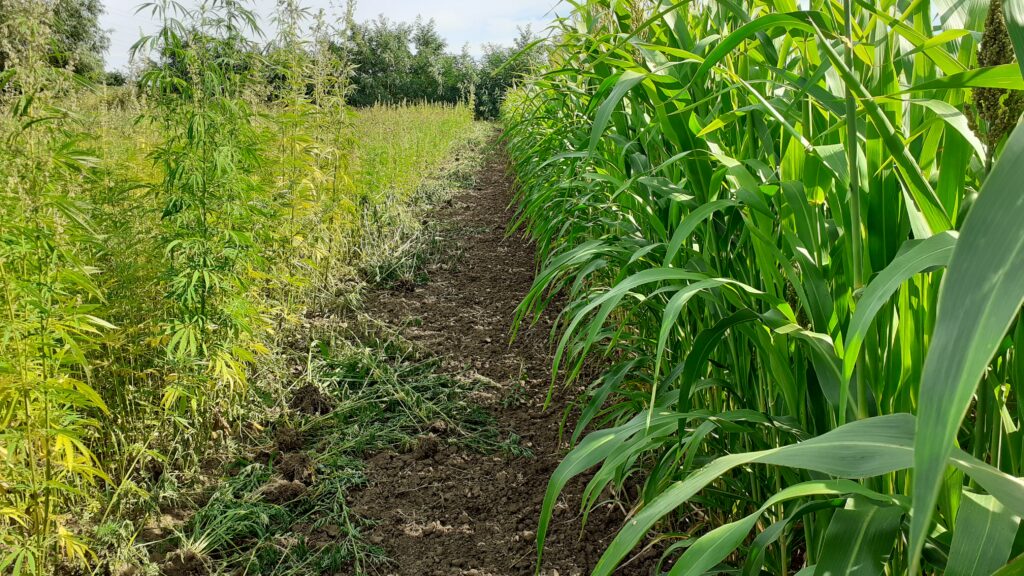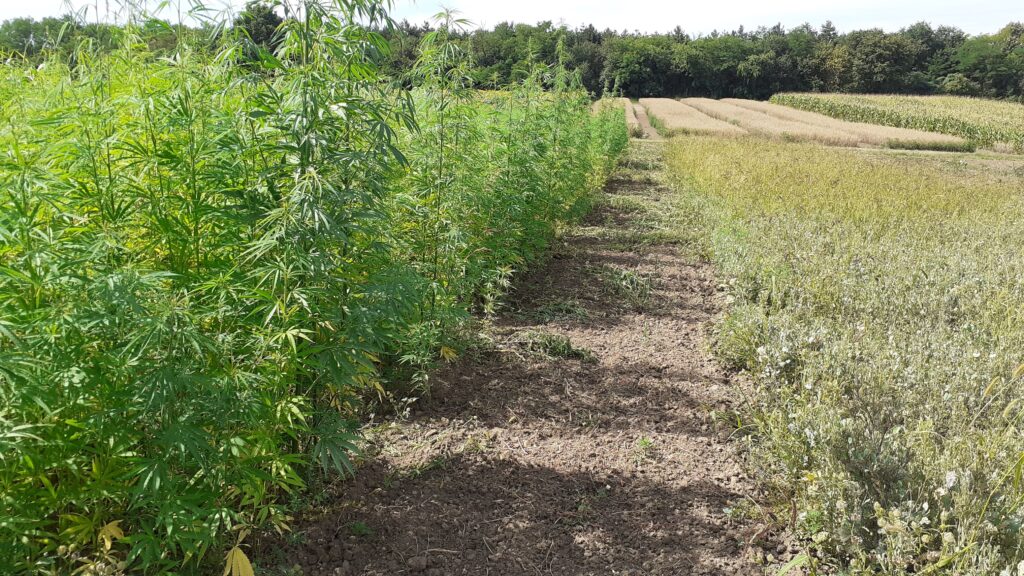In the EU around 60 million hectares of agricultural land have characteristics of marginality, representing approximately 29% of the total available agricultural land. This figure is expected to increase in the future, due to the effects of climate change (e.g. a decrease in precipitation during the growing season, extreme heat and droughts).
Biomass feedstock obtained from crops grown in marginal land can be successfully used for the production of chemical building blocks, bio-materials, elastomers, and other bio-based products, however, in order to utilize marginal land, there is a need to develop specific resilient plant species and new breeding materials that can cope with water shortages and/or water eccess, droughts, soil erosion. Other additional requirements for industrial crops to be grown marginal land are the resistantance to pests and disease and low cultivation cost. At the same time, introducing these crops in marginal land could positively contribute to the preservation of biodiversity (for example by growing them in agroforestry systems) , ecosystem services and soil health.
In the selection of the species for marginal land, condition both annual and perennial species, as well as intermediate and cover crops can be included.
The goal of MIDAS project to evaluate, grow and utilize sustainable biomass raw materials (low-ILUC and low-input) for industrial applications, and to develop plant cultivation methods that can be successfully applied in agricultural areas of Europe with marginality conditions, less suitable for food production, often with extreme characteristics, or from which additional new bio-based industrial products can be produced.
Marginality factors
From previous studies of MIDAS partners, 18 physical factors of soil marginality were identified which were then classified into the following six limiting groups:
1. extreme climate, e.g. low temperature and/or drought;
2. water stagnation, e.g. low drainage capacity of the soil or high soil moisture;
3. low nutrient supply, e.g. low organic matter content, acidic and alkaline soils;
4. extreme chemical reaction and toxicity, e.g. saline, saline-alkaline soils, contaminated (Al, S), soils toxic by pollutants;
5. weak rooting, e.g. shallow fertile layer, inadequate soil structure and texture, clay, stony, sandy soils;
6. extreme territorial features, e.g. sloping areas, flood plains.
MIDAS demo fields and agricultural activities in Hungary
SOLTUB Ltd. participates as a Hungarian partner in MIDAS and together with the MATE university, this year they established a half-hectare agroforestry experiment with two perennial crops, Chinese reed (Miscanthus sinensis) and poplar (Populus sp.), and three annual crops, namely ethiopian mustard, (Brassica carinata), industrial hemp (Cannabis sativa) and fiber sorghum (Sorghum bicolor) in a 4 block random arrangement, each crop having a 1,000 m2 harvesting area.
The results of the first year trials were presented to stakeholders including growers, seed producers, and the food safety authority, during the first meeting of the MIDAS Regional Advisory Group (RAG) that was held at the end of September 2023 in Hungary.
The most successful crop in 2023 was the Chinese reed that reached a height of 1.5 meters, in its first year of establishement. The advantage of its cultivation is that it can be grown on almost any type of soil, it has no special requirements for the pH of the soil, it is an extremely tolerant plant, so it can be adapted to extreme conditions and it significantly increases the carbon sequestration capacity of the soil. The crop will be harvested in 2024. Another successful perennial plant was the poplar which was able to tolerate the dry soils and drought conditions for a short period last summer. Most preferred soil are the clay soils. A good water supply is important for the root system, too long dry periods prevent root development and the plants can dry out. In the experiment, planting was done in twin rows with a spacing of half a meter on the rows, and with a row spacing of 0.7 meters. Harvesting will start in 2024.

As annual crops two varieties of fodder sorghum , GK Erik and GK Balázs were in the trials, both with good results. Sorghum can grow in a variety of soils, temperatures and soil moisture, and can tolerate soil pH values between 5 and 8.5. In general, the plant density of sorghum varies between 110,000 and 200,000 plants/ha. In the experiment, we used double grain (25 cm) row spacing and 10 cm seed spacing. Sorghum can resists to drought more successfullythan corn. Its fertilization requirement is low. The biomass yield can reach 30 t/ha. It can also be successfully grown for biogas plants. Hemp was tested with two varieties (Tiborszállás and Kompolti), both having a lower yield than expected. Thirteen varieties of hemp are registered in Hungary. In addition to its industrial use, it can also be used to clean up contaminated soils, as it absorbs heavy metals such as Cd, Pb, Zn, Cu. The row spacing in the trial was 12.5 cm. The whole plant, seeds, fiber and leaves can be used.

FInally the last annual crop tested this year was the Ethiopian mustard (Brassica carinata) which is suitable for a variety of soils and tolerates drought as well. It can be successfully grown in areas contaminated with heavy metals, so it can also be used for phytoremediation purposes. In our experiment, sowing was done at a row spacing of 12.5 cm. The chosen Capuccino variety proved not to be suitable for cultivation, as it is sensible to pests and, due to the lack of flowering, had no grain yield.

Based on the results of the first year, it can be concluded that in the conditions without fertilization and irrigation, the perennial plants, such as Chinese reed and poplar plantings gave good results, and among the annual plants, both varieties of sorghum also performed well. The trials will continue for the next years and the plantations will also serve as demonstration sites for the regional advisory groups and the local farmers.
This is an edited version of original text provided by Zoltan Hajdu, SOLTUB Ltd. Hungary.

